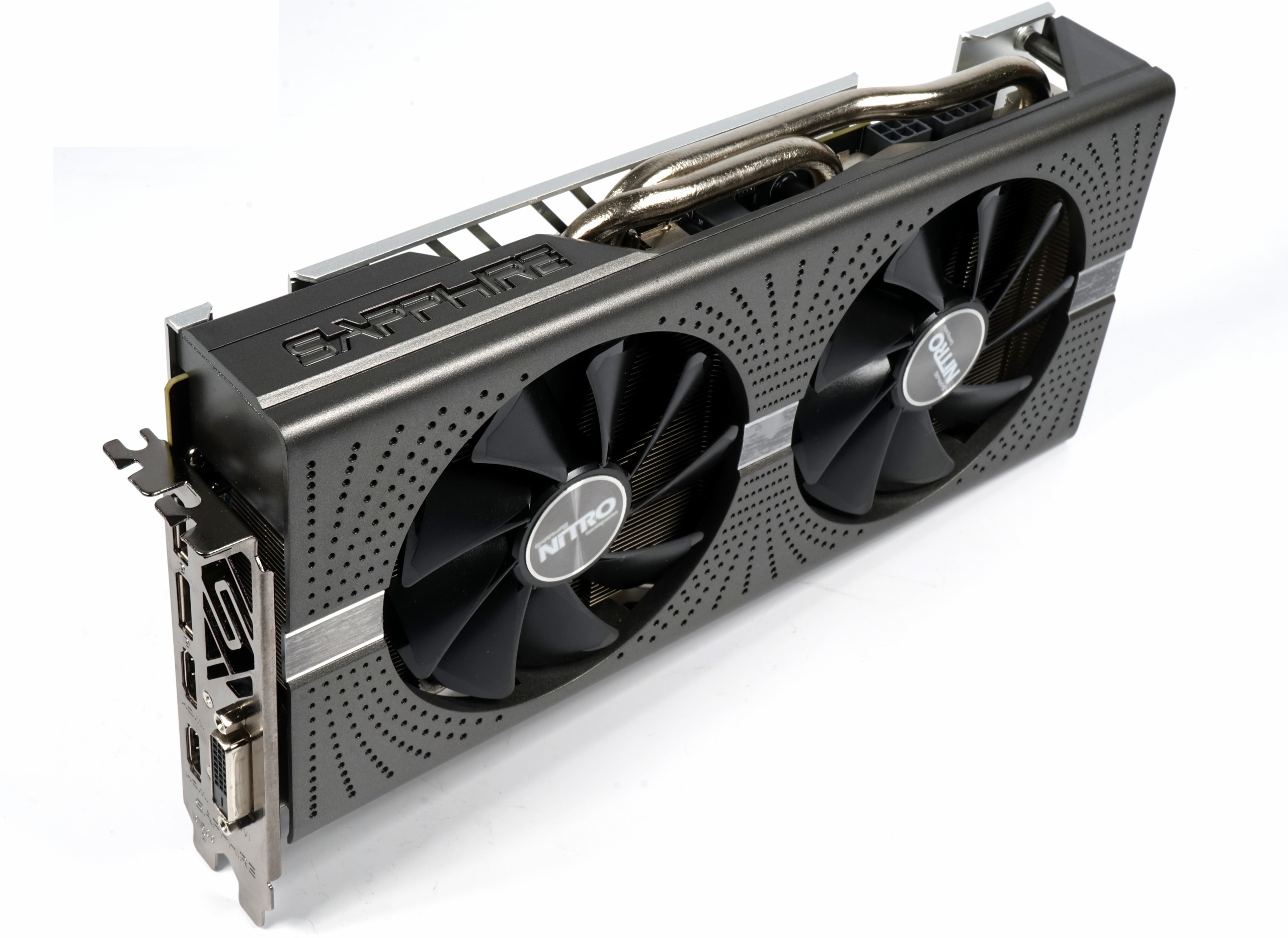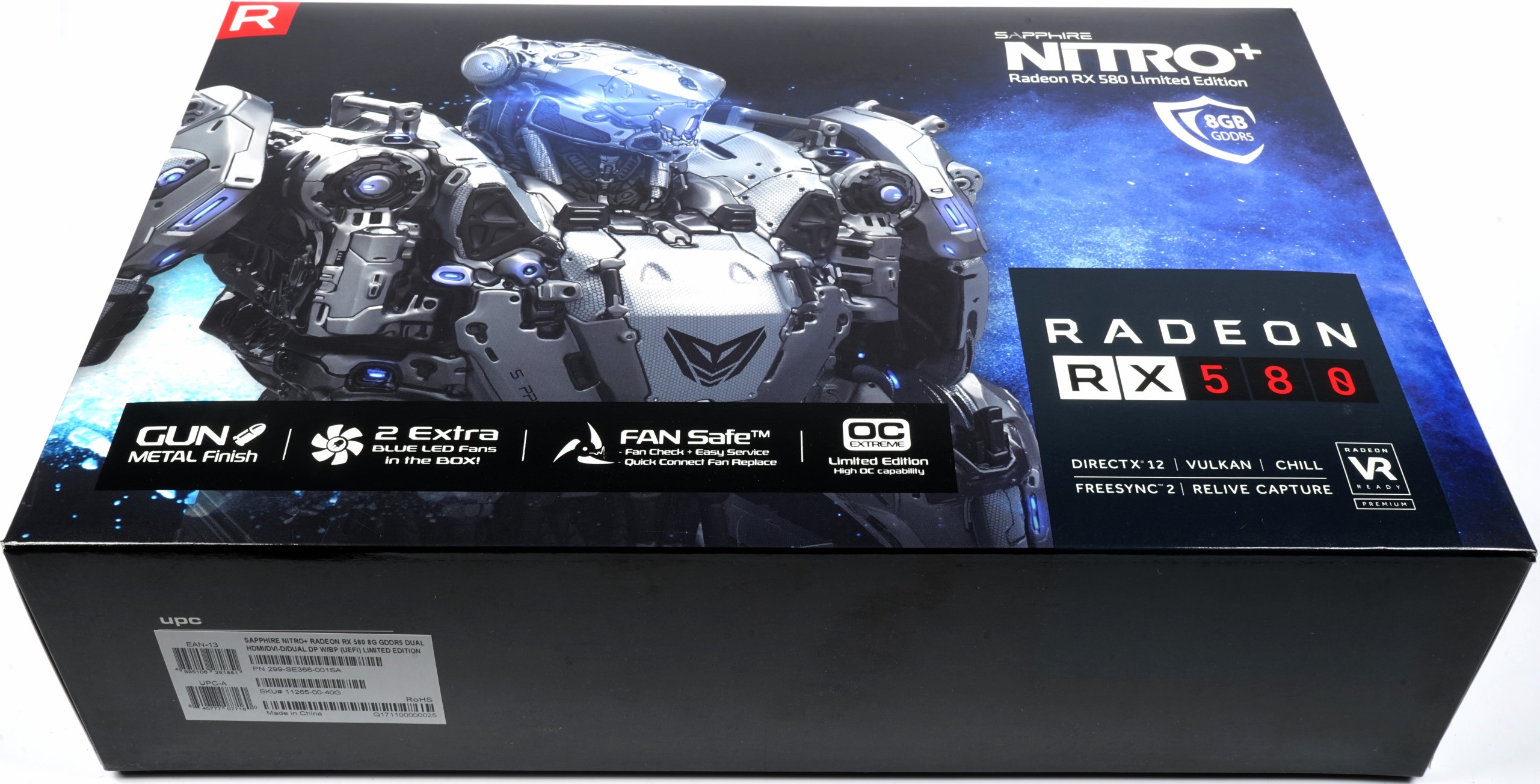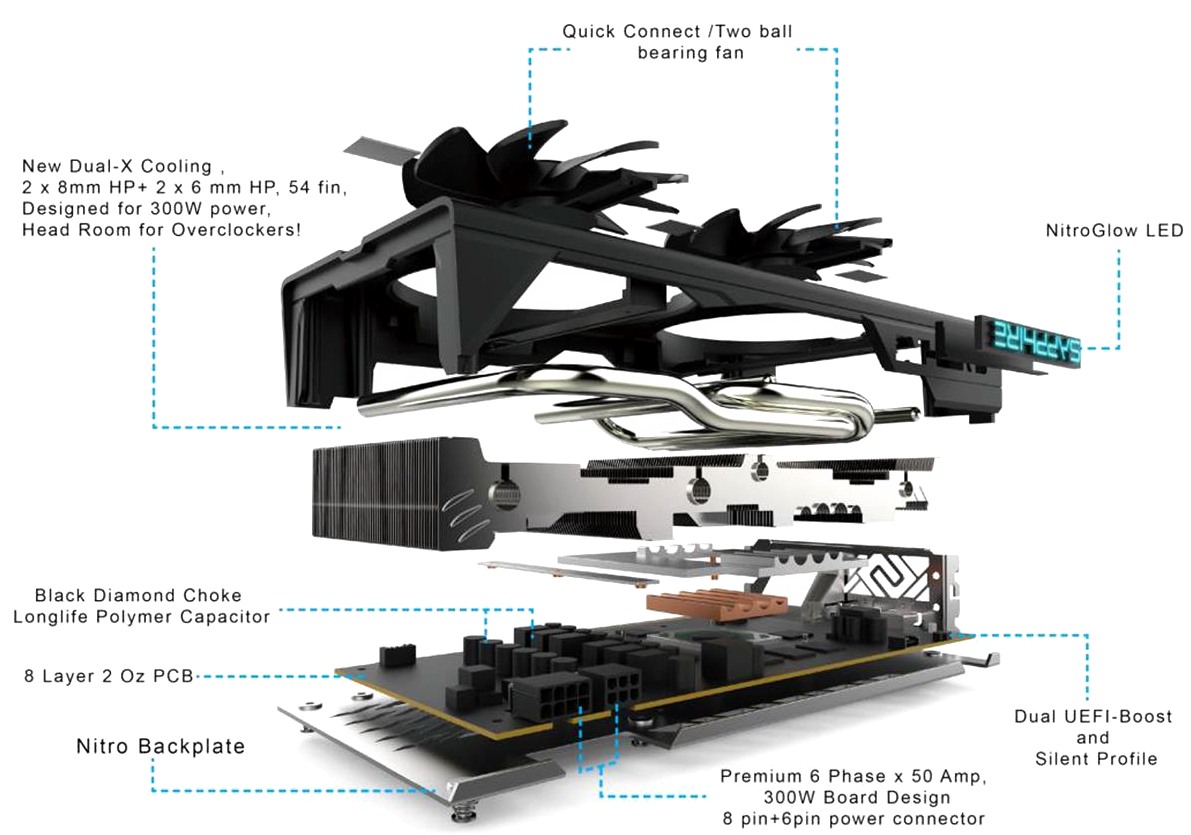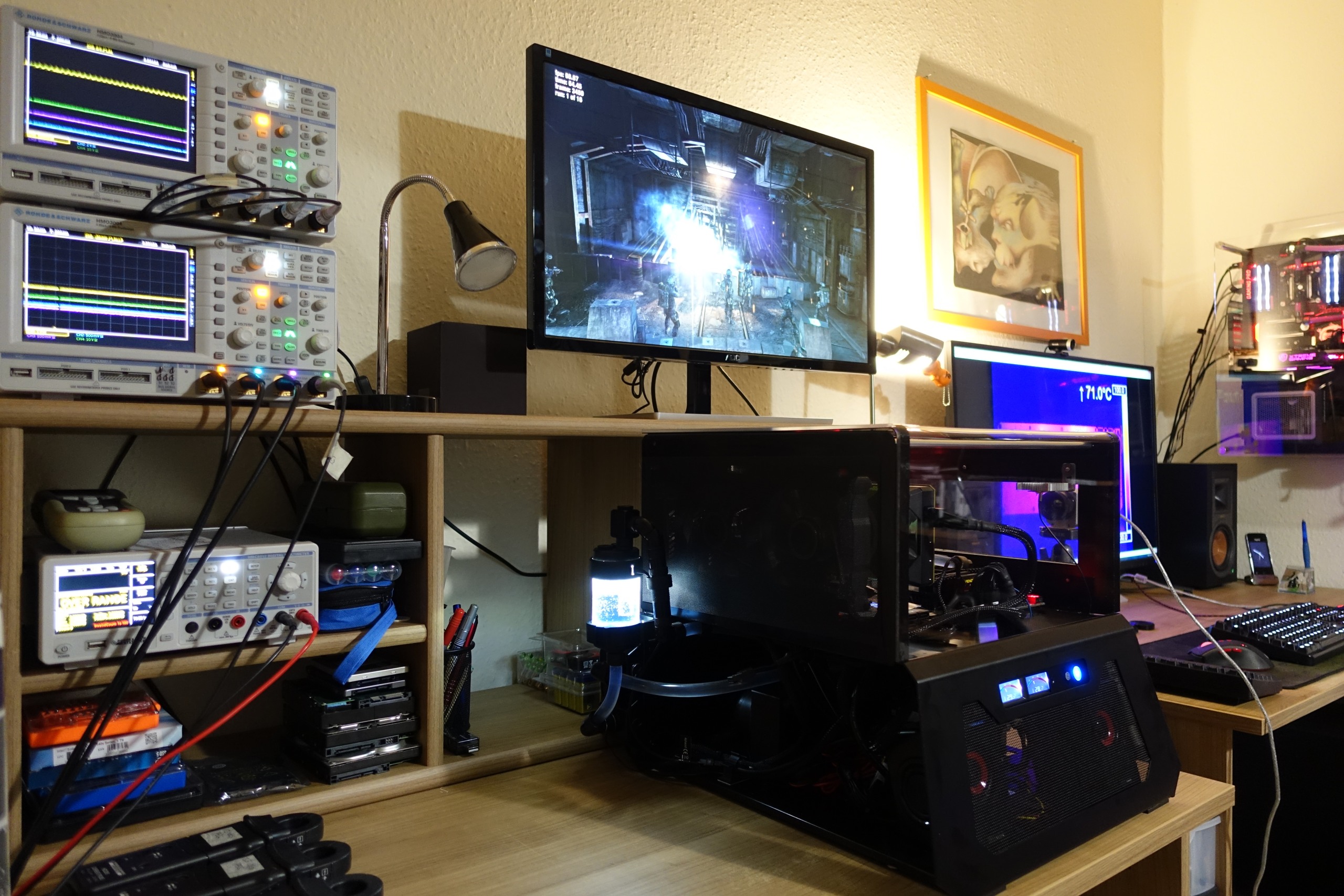Tom's Hardware Verdict
AMD's Radeon RX 580 uses the same Ellesmere GPU as its predecessor at higher clock rates. The new cards should start around $230 and compete against Nvidia's GeForce GTX 1060 6GB. We like the extra performance, but could do without AMD's proclivity for re-branding existing products.
Pros
- +
Faster than Radeon RX 480
- +
Lower multi-monitor and video playback power use
- +
Similar starting price as Radeon RX 480
Cons
- -
Higher power consumption than Radeon RX 480 under load
- -
New name may confuse some
Why you can trust Tom's Hardware
That's right: the Radeon RX 580 8GB isn't new by any meaningful measure. It's an updated version of last year's Radeon RX 480, based on the same Ellesmere GPU under AMD's Polaris umbrella. If your memory of last June's launch is a little hazy, our AMD Radeon RX 480 8GB Review covers the architecture in detail. It predates Nvidia's response, though, so let's get caught up with the state of mainstream gaming in 2017.
Editor's Note: While still widely sold and a reasonable buy, the RX 580 is a little long in the tooth. Check out our up-to-date list of the best graphics cards for more recent picks.
A couple of weeks after AMD debuted its RX 480, Nvidia followed up with GeForce GTX 1060 6GB, which outperformed Polaris in most of our benchmark suite. But it was also more expensive. And as time went on, a wider selection of DirectX 12 games showed that Nvidia's advantage really only applied to DirectX 11. These days, Radeon RX 480 8GB and GeForce GTX 1060 6GB are priced fairly competitively to reflect the fact that they trade blows, depending on what you play.
AMD wants something a little more decisive, though. So it's turning up the core clock on Ellesmere, dialing its starting price to $230, and slapping a new name on the tweaked configuration: Radeon RX 580. This is a familiar move from AMD's playbook. Old favorites like the 2012-era Pitcairn GPU span as many as four generations of Radeon products, after all.
| Row 0 - Cell 0 | Nvidia GeForce GTX 970 | Nvidia GeForce GTX 1060 Founder's Edition | AMD Radeon RX 480 (Reference) | Sapphire Nitro+ RX 580 LE | Sapphire Nitro+ RX 580 |
| GPU (Codename) | GM204 (Maxwell) | GP106 (Pascal) | Ellesmere XT (Polaris 10) | Ellesmere XT (Polaris 10) | Ellesmere XT (Polaris 10) |
| Shader Units | 1664 | 1280 | 2304 | 2304 | 2304 |
| Base & Boost Clocks | 1050 MHz / 1178 MHz | 1506 MHz / 1709 MHz | 1120 MHz / 1266 MHz | 1450 MHz/1411 MHz | 1411 MHz/1340 MHz |
| Memory Size & Type | 4GB GDDR5 | 6GB GDDR5 | 8GB GDDR5 | 8GB GDDR5 | 8GB GDDR5 |
| Memory Clock | 1750 MHz | 2027 MHz | 2000 MHz | 2000 MHz | 2000 MHz |
| Memory Bandwidth | 224 GB/s | 192.2 GB/s | 256 GB/s | 256 GB/s | 256 GB/s |
| Fans | Radial | Radial | Radial | (2) 95mm Axial | (2) 95mm Axial |
| Ports | (3) DP, (1) DVI-I, (1) HDMI 2.0 | (3) DP, (1) DVI-D, (1) HDMI 2.0 | (3) DP, (1) HDMI 2.0 | (2) DP, (1) DVI-D, (2) HDMI 2.0 | (2) DP, (1) DVI-D, (2) HDMI 2.0 |
| Power Connectors | (2) 6-pin | (1) 6-pin | (1) 6-pin | (1) 8-pin, (1) 6-pin | (1) 8-pin, (1) 6-pin |
| Dimensions (LxHxD) | 26.7 x 11.1 x 3.5cm | 25.4 x 10.7 x 3.5cm | 24.2 x 10.5 x 3.5cm | 26.2 x 13.2 x 3.5cm | 26.2 x 13.2 x 3.5cm |
| Weight | ?? | 845g | 685g | 974g | 974g |
| Warranty | 3 Years | 3 Years | N/A | 2 Years | 2 Years |
The question now is whether Radeon RX 580 changes the narrative in any way. Does the performance, pricing, and power of "Polaris, Enhanced" strike hard at Nvidia's GP106 processor, or does it only serve to obfuscate the mainstream market with a new name on something old?
AMD didn't bother with a new reference design this time around, and the old one wasn't suitable for RX 580 due to issues we exposed in our Radeon RX 480 launch story and follow-up coverage. Instead, AMD's partners were tasked with designing their own Radeon RX 580s and sending out overclocked versions for sampling ahead of launch. In response, we set aside our reference boards and sought out factory-overclocked models of competing products to compare.
Sapphire Nitro+ Radeon RX 580 Limited Edition
The Tom's Hardware U.S. and German labs received Sapphire's Nitro+ Radeon RX 580 Limited Edition card. It boasts two BIOSes with different clock rates: one sets an ambitious 1450 MHz boost clock and 1411 MHz silent mode, while the other employs a 1411 MHz boost frequency and 1340 MHz silent mode. All of our performance, power, temperature, and acoustic measurements are taken at the 1450 MHz setting, though that latter configuration is in line with what you'll see from most other partner boards.
Get Tom's Hardware's best news and in-depth reviews, straight to your inbox.
Consequently, our launch coverage of Radeon RX 580 is more a review of Sapphire's specific implementation than an evaluation of Ellesmere, revamped. But it should still address what AMD's "new" cards are capable of. Don't expect to find this board anywhere near AMD's $230 starting price. Rather, we're told the aggressively-overclocked model will sell for $275, making it the priciest RX 580 at launch time.
The diagram below illustrates Sapphire's design. It's quite a bit different than the Nitro+ Radeon RX 480 that precedes it.
From the outside, this card's understated appearance is neither gaudy nor cheap-looking. It's classy, but not plain. The plastic fan shroud resembles polished metal. Once you touch it, though, the cover's composition is immediately apparent.
On the other hand, Sapphire's sturdy backplate is made of metal. It's also quite a bit flashier with a clean mix of black, grey, and aluminum.
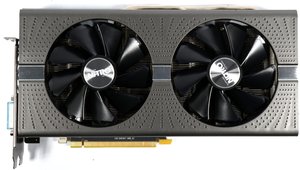
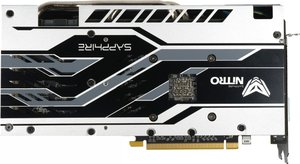
The Nitro+'s length, from the outer edge of its slot bracket to the end of the cooler, is 26.2cm. Its height, from the motherboard slot's top edge to the cooler's protruding heat pipes, is 13.2cm. A depth of 3.5cm makes this a medium-size dual-slot card. Roughly 0.5cm of the depth measurement is attributable to that backplate though, which could affect compatibility with large CPU coolers or mini-ITX-based form factors.
Two 8mm heat pipes made of nickel-plated composite material, an illuminated Sapphire logo, and two power connectors (one eight- and one six-pin) are visible from above the card.
Underneath, you get a good look at Sapphire's heat sink and the thermal solution's two 6mm heat pipes. We also catch a glimpse of the sink responsible for drawing heat away from the MOSFETs.
The cooler’s fins are arranged horizontally, and the end of the card is open to promote air flow. There should be some ventilation possible through the slot bracket as well. Unfortunately, only one small area allows air to escape. The rest of the bracket is monopolized by display outputs, including a big DVI-D port that's slowly going out of vogue.

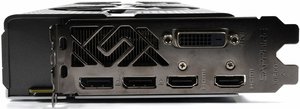
Interestingly, Sapphire deploys two HDMI 2.0 connectors, likely a nod to enthusiasts with VR headsets, and a pair of DisplayPort 1.4-ready outputs.
Specifications
Test System and Methodology
We introduced our new test system and methodology in How We Test Graphics Cards. If you'd like more detail about our general approach, check that piece out.
Specifically, for this review, we split testing between our U.S. (performance) and German (power, acoustics, thermal) labs. As mentioned, we set aside our reference-class boards in favor of factory-overclocked models that better represent today's selection of available products. After experimenting with the Windows 10 Creators Update, we were forced to uninstall it after discovering compatibility issues between several games and our measurement software. We're working to address this. However, all results are generated using the latest drivers, including AMD's Crimson ReLive Edition 17.4.2 package, the 500-series press driver, and Nvidia's 381.65 Game-Ready driver.
Special thanks goes to AMD for ensuring our two labs received the same hardware for evaluation, Gigabyte for replacing our Founders Edition card with its GeForce GTX 1060 G1 Gaming 6G, and MSI for replacing our AMD Radeon RX 480 8GB with its own Radeon RX 480 Armor 8G OC. The full list of contenders includes:
Asus ROG Strix Radeon RX 570 4GB
The hardware used in our German lab includes:
| Test Equipment and Environment | |
| System | - Intel Core i7-7700K- MSI Z270 Gaming M7- Corsair Vengeance DDR4-3200 @ 2400 MT/s- 1x 1TB Toshiba OCZ RD400 (M.2, System SSD)- 2x 960GB Toshiba OCZ TR150 (Storage, Images)- Be Quiet Dark Power Pro 11, 850W PSU- Windows 10 Pro (All Updates) |
| Cooling | - Alphacool Eispumpe VPP755- Alphacool NexXxoS UT60 Full Copper 360mm- Alphacool Cape Corp Coolplex Pro 10 LT- 5x Be Quiet! Silent Wings 3 PWM- Thermal Grizzly Kryonaut (Used when Switching Coolers) |
| PC Case | - Lian Li PC-T70 with Extension Kit and Mods- Configurations: Open Benchtable, Closed Case |
| Power Consumption Measurement | - Contact-free DC Measurement at PCIe Slot (Using a Riser Card) - Contact-free DC Measurement at External Auxiliary Power Supply Cable - Direct Voltage Measurement at Power Supply- 2 x Rohde & Schwarz HMO 3054, 500MHz Digital Multi-Channel Oscilloscope with Storage Function - 4 x Rohde & Schwarz HZO50 Current Probe (1mA - 30A, 100kHz, DC) - 4 x Rohde & Schwarz HZ355 (10:1 Probes, 500MHz) - 1 x Rohde & Schwarz HMC 8012 Digital Multimeter with Storage Function |
| Thermal Measurement | - 1 x Optris PI640 80Hz Infrared Camera + PI Connect- Real-Time Infrared Monitoring and Recording |
| Noise Measurement | - NTI Audio M2211 (with Calibration File, Low Cut at 50Hz)- Steinberg UR12 (with Phantom Power for Microphones)- Creative X7, Smaart v.7- Custom-Made Proprietary Measurement Chamber, 3.5 x 1.8 x 2.2m (L x D x H)- Perpendicular to Center of Noise Source(s), Measurement Distance of 50cm- Noise Level in dB(A) (Slow), Real-time Frequency Analyzer (RTA) - Graphical Frequency Spectrum of Noise |
MORE: Best Graphics Cards
MORE: Desktop GPU Performance Hierarchy Table
MORE: PresentMon: Performance In DirectX, OpenGL, And Vulkan
MORE: All Graphics Content
Current page: Introducing the AMD Radeon RX 580 8GB
Next Page Power Supply and Cooling
Igor Wallossek wrote a wide variety of hardware articles for Tom's Hardware, with a strong focus on technical analysis and in-depth reviews. His contributions have spanned a broad spectrum of PC components, including GPUs, CPUs, workstations, and PC builds. His insightful articles provide readers with detailed knowledge to make informed decisions in the ever-evolving tech landscape
-
max0x7ba Battlefield 1 2560x1440, Ultra benchmark Radeon RX 580 minimum fps does not look right.Reply -
lasik124 Unless I am really missing something, can't you just slightly overclock the 480 to match the slight performance boost the 580 has?Reply -
FormatC Reply
Take a look at the frametimes at start. I think, it's a driver issue, because it was reproducible ;)19579183 said:Battlefield 1 2560x1440, Ultra benchmark Radeon RX 580 minimum fps does not look right.
No, it were in each case less than 1375 MHz. Slower as the Silent Mode of this 580 and simply too hot for my taste. The problem is not the pre-defined clock rate itself but the reduced real clocks from power tune due temps and voltage/power limtations;)19579237 said:Unless I am really missing something, can't you just slightly overclock the 480 to match the slight performance boost the 580 has?
-
lasik124 Reply19579253 said:
Take a look at the frametimes at start. I think, it's a driver issue, because it was reproducible ;)19579183 said:Battlefield 1 2560x1440, Ultra benchmark Radeon RX 580 minimum fps does not look right.
No, it were in each case less than 1375 MHz. Slower as the Silent Mode of this 580 and simply too hot for my taste. The problem is not the pre-defined clock rate itself but the reduced real clocks from power tune due temps and voltage/power limtations;)19579237 said:Unless I am really missing something, can't you just slightly overclock the 480 to match the slight performance boost the 580 has?
So i guess what Im trying to ask is it worth buying at 580 (Currently at a 7870) or save a couple bucks pick up a 480 non reference cooler and be able to slightly overclock it to get in game benchmarks similar if closely identical to the current 580?
-
Math Geek no, you'll get the 480 numbers with a 480. the tested card was already oc'ed and you won't get any better manually. the changes made to the 580 can't be done to the 480.Reply
want the extra few fps, then you'll want to get a 580. -
Tech_TTT I dont get it , for sure AMD could release this card as the original RX 480 long ago , why did they allow Nvidia GTX 1060 to steal the RX 480 share ?Reply
Very Stupid Strategy ... I now alot of people who bought GTX 1060 and wished AMD were better Just to take advantage of the cheaper Freesync Monitors.
AMD you lost millions of buyers !!! for nothing !!! -
turkey3_scratch Reply19579402 said:I dont get it , for sure AMD could release this card as the original RX 480 long ago , why did they allow Nvidia GTX 1060 to steal the RX 480 share ?
Very Stupid Strategy ... I now alot of people who bought GTX 1060 and wished AMD were better Just to take advantage of the cheaper Freesync Monitors.
AMD you lost millions of buyers !!! for nothing !!!
Don't think it's as simple as you make it out to be. They're a huge company with a ton of professionals, they know what they're doing. -
madmatt30 Reply
.19579402 said:I dont get it , for sure AMD could release this card as the original RX 480 long ago , why did they allow Nvidia GTX 1060 to steal the RX 480 share ?
Very Stupid Strategy ... I now alot of people who bought GTX 1060 and wished AMD were better Just to take advantage of the cheaper Freesync Monitors.
AMD you lost millions of buyers !!! for nothing !!!
Better binning ,refinements on the power circuitry - something thats come with time after the initial production runs of the rx470/480.
Fairly normal process for how amd work in all honesty.
Has it lost them some custom to prospective buyers in the last 6 months since the rx series was released ?? Maybe a few - not even 1% of the buyers they'd have lost if theyd actually held the rx series release back until now though!!
-
Tech_TTT Reply19579428 said:
.19579402 said:I dont get it , for sure AMD could release this card as the original RX 480 long ago , why did they allow Nvidia GTX 1060 to steal the RX 480 share ?
Very Stupid Strategy ... I now alot of people who bought GTX 1060 and wished AMD were better Just to take advantage of the cheaper Freesync Monitors.
AMD you lost millions of buyers !!! for nothing !!!
Better binning ,refinements on the power circuitry - something thats come with time after the initial production runs of the rx470/480.
Fairly normal process for how amd work in all honesty.
Has it lost them some custom to prospective buyers in the last 6 months since the rx series was released ?? Maybe a few - not even 1% of the buyers they'd have lost if theyd actually held the rx series release back until now though!!
Thats the Job of the R&D in the beta testing interval .. not after release, I am not buying this explanation at all.
